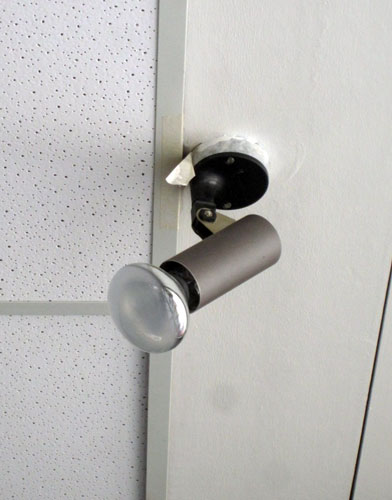zandpoortvest 10
be 2800 mechelen
t +32 15 336 336
m (b) +32 478 811 441
m (d) +32 475 477 478
Annelies Vanderkleuren
Annelies Vanderkleuren (° 1936, Baarle-Hertog, België)
maakt conceptuele kunstwerken en installaties. Met een subtiele minimalistische aanpak, gebruikt ze een visuele woordenschat die verschillende sociale en politieke aspecten behandelt.
Haar conceptuele kunstwerken worden gemaakt door middel van strenge regels die kunnen worden gezien als bevrijdende beperkingen. Romantische waarden als 'inspiratie', 'genie' en 'authenticiteit' worden daarbij geneutraliseerd en in perspectief geplaatst. Door massamedia te parodiëren en door formele aspecten te overdrijven, creëert ze werk waarin een fascinatie voor de duidelijkheid van de inhoud en een compromisloze houding ten opzichte van conceptuele en minimale kunst kan worden gevonden. Het werk is afstandelijk en systematisch.
Haar werken tonen hoe het leven verder reikt dan zijn eigen subjectieve grenzen. Haar praktijk biedt een handige set van allegorische tools en manoeuvrereert met een pseudo-minimalistische aanpak in de wereld van de conceptuele kunst.
For english scroll down.

Annelies Vanderkleuren (°1936, Baarle-Hertog, Belgium) makes conceptual artworks and installations. With a subtle minimalistic approach, Vanderkleuren uses a visual vocabulary that addresses many different social and political issues. The work incorporates time as well as space – a fictional and experiential universe that only emerges bit by bit.
Her conceptual artworks are made through strict rules which can be perceived as liberating constraints. Romantic values such as ‘inspiration’, ‘genius’ and ‘authenticity’ are thereby neutralised and put into perspective. By parodying mass media by exaggerating certain formal aspects inherent to our contemporary society, she creates work in which a fascination with the clarity of content and an uncompromising attitude towards conceptual and minimal art can be found. The work is aloof and systematic and a cool and neutral imagery is used.
Her works demonstrate how life extends beyond its own subjective limits and often tells a story about the effects of global cultural interaction over the latter half of the twentieth century. It challenges the binaries we continually reconstruct between Self and Other, between our own ‘cannibal’ and ‘civilized’ selves. By demonstrating the omnipresent lingering of a ‘corporate world’, she plays with the idea of the mortality of an artwork confronted with the power of a transitory appearance, which is, by being restricted in time, much more intense.
Her practice provides a useful set of allegorical tools for manoeuvring with a pseudo-minimalist approach in the world of conceptual art: these meticulously planned works resound and resonate with images culled from the fantastical realm of imagination. By merging several seemingly incompatible worlds into a new universe, her works references post-colonial theory as well as the avant-garde or the post-modern and the left-wing democratic movement as a form of resistance against the logic of the capitalist market system.
Her works are saturated with obviousness, mental inertia, clichés and bad jokes. They question the coerciveness that is derived from the more profound meaning and the superficial aesthetic appearance of an image. By applying a wide variety of contemporary strategies, she makes works that can be seen as self-portraits. Sometimes they appear idiosyncratic and quirky, at other times, they seem typical by-products of American superabundance and marketing.
Her works bear strong political references. The possibility or the dream of the annulment of a (historically or socially) fixed identity is a constant focal point.